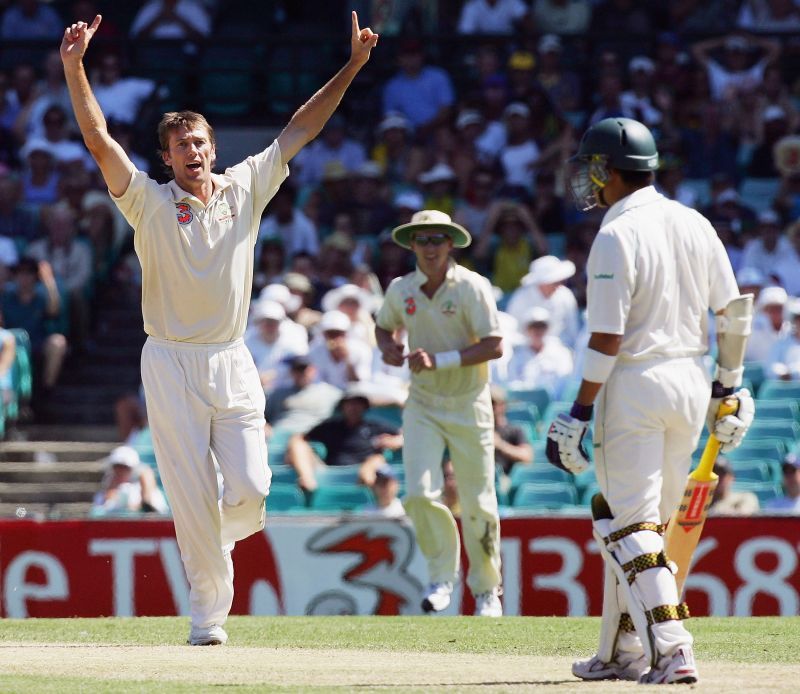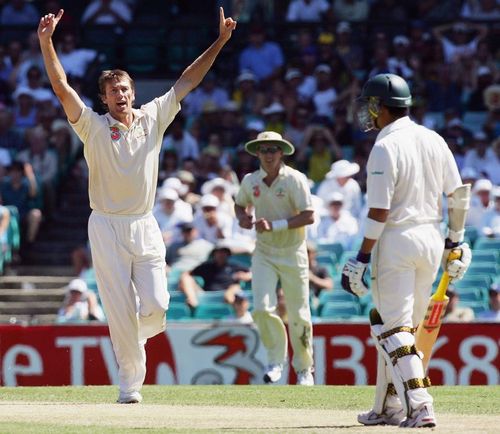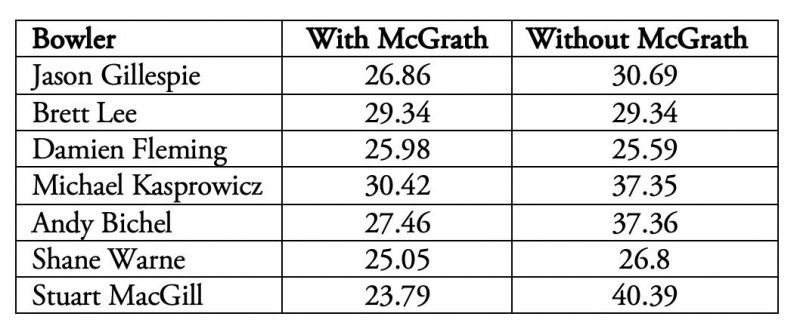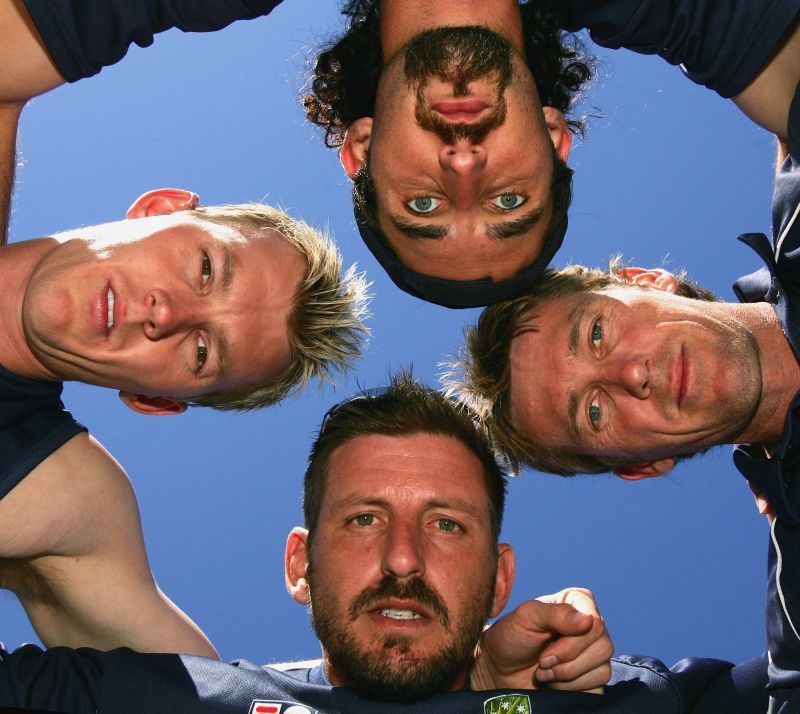
Glenn McGrath, the bridge that made Australia a dominating force

Shane Warne was a larger-than-life magician and Muttiah Muralitharan could spin it on glass.
Brian Lara's flair made jaws drop, while Sachin Tendulkar redefined the limits and Ricky Ponting's purple patch seemed never-ending. Sanath Jayasuriya would go on to re-write the definition of an opener and Adam Gilchrist would do the same to the role of a wicketkeeper-batsman.
Wasim Akram could make the ball talk; whereas the likes of Waqar Younis, Curtly Ambrose, Shoaib Akhtar and Allan Donald sent shivers down a batsman’s spine.
In that era of superstars and their remarkable grace, there stood a giant, unspectacular in his approach, but unmatched in his menacing impact. He did what he did with no superpower, but by devoting himself to the thumb rule of bowling: being consistent with his immaculate line and length.
Born on February 9, 1970, Glenn McGrath was the catalyst that converted a tremendous Australian side to a near-invincible force during the 1990's and 2000's.
Glenn McGrath played international cricket for over 13 years. During this span, Australia dominated the No.1 position in the ICC Rankings for eleven and seven years cumulatively for Tests and ODI's respectively.
The same phase saw them win three out of their four World Cups (1999, 2003 and 2007) while finishing runners-up in the 1996 edition. They also won the 2006 Champions Trophy.
McGrath was the force behind the same.
Most successful bowlers during Glenn McGrath’s career

Glenn McGrath made his Test debut in the Trans-Tasman Trophy during the 1993-94 season. He went on to make sporadic appearances in the next five series until the end of the 1994-95 Ashes and had produced little returns.
His first big moment arrived during the historic West Indies tour in 1995.
McGrath played a massive role in ensuring history was made. Australia’s 2-1 victory displaced West Indies from the top of the Test Rankings for the first time in 15 years. McGrath picked 17 wickets in the series at 21.7.
He continued his excellent run against Pakistan and Sri Lanka at home, finishing 1995 with 52 wickets at 21.88.
From 1995 to the end of his career, McGrath averaged 29+ in only two calendar years (2003 and 2006). In no other year did his average even touch 24.
In ODIs, his impact was more immediate. His probing lines stifled the opposition’s run flow and presented batters with very little margin of error.
Another hallmark of McGrath’s career was the quality of wickets he got. He dismissed Brian Lara 18 times in international cricket. Sachin Tendulkar and Jacques Kallis would fall to him 13 and 12 times respectively.
The Glenn McGrath Impact
Some number-crunching tells us the difference Glenn McGrath made to the Australian side.
Australia’s Test record during Glenn McGrath’s career

Some number-crunching tells us the difference Glenn McGrath made to the Australian side. His presence is reflected in Australia's win-loss ratio in the Tests they played without him.
McGrath's presence made a more significant impact when Australia played at home. The win-loss ratio almost dropped by one-fifth when he didn't play in the Tests at home.
Australia in home Tests during Glenn McGrath’s career

Trivia: Glenn McGrath wasn't a part of the Australian side when India drew 1-1 in Australia during the 2003-04 season to retain the Border-Gavaskar Trophy.
Glenn McGrath's positive influence on colleagues
Australian bowling possessed a skilled armory. The numbers in isolation tell you that the likes of Jason Gillespie, Brett Lee, Shane Warne and Stuart MacGill were good enough to win matches on their own, which they did. But here's the massive McGrath factor. His presence ended up bettering the performances of his bowler colleagues.
Bowling averages of some Australian bowlers with and without McGrath

Most Australian bowlers during his era found their sting with Glenn McGrath bowling around them.

Adaptability is another factor that places McGrath amongst the greatest of all-time.
Even in severe subcontinent conditions where fast bowlers have usually struggled, McGrath found ways to claim wickets and ended up averaging 23.
In all the other continents, his average is even lower.
Glenn McGrath – the ODI great
In one of the Australian tri-series in the mid-1990s, Australia and Australia A played the tournament final. The team that couldn’t qualify was England.
The above fact speaks volumes of the Australian bench-strength during that time. The Australia A side were as good as any other international team. Their superior bench strength allowed them to rotate bowlers in ODI's.
McGrath’s absence didn’t hurt Australia as much in ODI's. However, his presence made a significant difference.
He wouldn’t bowl express pace like Lee or Shoaib, nor would he dart-in yorkers at will like Wasim or Waqar. His success-mantra, again, was the same boring line-and-length method. Yet that accuracy made him look as good as any superstar. He hated giving away runs.
Australia’s ODI record during Glenn McGrath’s career

Mark Waugh was sensational at the 1996 World Cup. Ricky Ponting and Matthew Hayden would set the first two World Cups of the new millennium alight. Then there was Adam Gilchrist, the impact-man for the finals.
The fan-memories are mostly limited to Australia's batting exploits in the ICC tournaments and the Shane Warne classics from the 1999 editions. Behind them operated their guiding force, Glenn McGrath, with impeccable consistency.
McGrath remains the highest wicket-taker in World Cups with 71 wickets. He retired at the age of 37 with the 2007 World Cup and the Player of the Tournament Trophy.
Most successful bowlers in the World Cup and Champions Trophy

Glenn McGrath was a breed as rare as they make. Not many bowlers have lasted this long with equal effectiveness in both the formats. He would stroll into any all-time sides.
His presence bettered his colleagues’ performances. Off the field, he championed the cause of breast cancer treatment after losing his wife, Jane.
He is the Chairman of ‘The McGrath Foundation’. Every year, the January Sydney Test is played as the Pink Test and the third day of the same is annually celebrated as Jane McGrath Day.
Once a student at the MRF Pace Foundation in Chennai, Glenn McGrath currently serves as the prestigious institute’s Chairman.